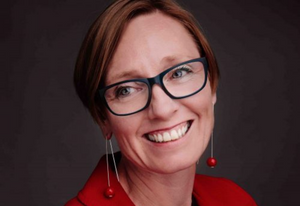
By: Jo Taylor | Chair PWIT Committee & PA PWIT Peer Network
As a fresh-faced graduate, I had the opportunity to work in both the fundraising and grant giving departments of a publicly funded UK grant-maker. In fundraising I was wowed by the concept of the “Golden Pound;” every pound that was raised from the public would be spent directly on projects, not on running costs. How brilliant! What donor wouldn’t want to know that every single penny of their hard-earned cash was going to where it was needed the most?
The public loved it too – that year we raised £27m for organisations focused on reducing and relieving poverty. Over 30 years the organisation has gone on to raise over £1billion from the British public. They trusted us to spend their money well, I wonder what role the “Golden Pound” played in developing that trust?
After my stint in fundraising, in grant-making I learnt effective due diligence processes are rigorous not onerous. I learnt the direct connection between an organisation’s ability to deliver and the capability and capacity of the leadership and wider team: impact is amplified by robust policies and processes and by internal cultures focused on learning and growth.
To be an efficient and effective organisation that can measure outputs and outcomes, resourcing for indirect costs and a semblance of funding stability are crucial.
Despite our fundraising rhetoric, the grants department purposefully provided multi-year funding for indirect costs. We understood that for transformative change to occur you have to invest in organisations, and provide the space and freedom for leaders to respond and react to be able to realise their vision; and for a project to be successful, you also need to cover the indirect costs.
I’m no longer wowed by the concept of the “Golden Pound” or the Australian equivalent. Such fundraising approaches prolong the damaging myth that donors should not have to cover indirect costs, thus inferring that there is a correlation between lower indirect costs and effectiveness.
Over the last decade, compelling evidence of the unintended consequences of such approaches has emerged in the US. Five foundations have courageously led the conversation by transparently reviewing their own practice and working in partnership with their grantees to unpick this insidious practice that only goes, in fact, to hamper impact. Through a collaborative research project they discovered that
“the participating funders paid an average of 88 cents for every dollar of grantees’ actual expenses, creating a shortfall of roughly $12,000 for every $100,000 worth of work executed by the organisation.”[1]
One Foundation commissioned a study to understand the indirect cost rates of financially healthy organisations. Reviewing the tax data from over 130,000 US-based non-profit organisations helped to establish a benchmark for the Foundation’s grant making. As a result, they have adopted an indirect cost rate of 29 per cent on all project costs. A stark contrast, in my experience, to the 10-15 per cent average in Australia.
Now it’s our turn to be courageous and vulnerable. We need to understand our assumptions about indirect costs and explore how our funding mechanisms amplify or hinder impact. If you’re as intrigued as I am about who in Australia is pioneering this approach, and how more of us can adopt better philanthropic practice, look out for the launch of the research by the Centre for Social Impact and Social Ventures Australia, on 24th March. Join me, Ilana Atlas (Director, Paul Ramsay Foundation), Doug Taylor (CEO, The Smith Family) and Jack Heath (CEO, Philanthropy Australia), to discuss what it means to Pay What It Takes in Australia. Together we can really understand how we can Pay What it Takes to create transformational change enabling Australia to thrive. Will you join us?
Register here for the Report Launch: ‘Paying What It Takes’ approach to grantmaking event on Thursday 24 March.